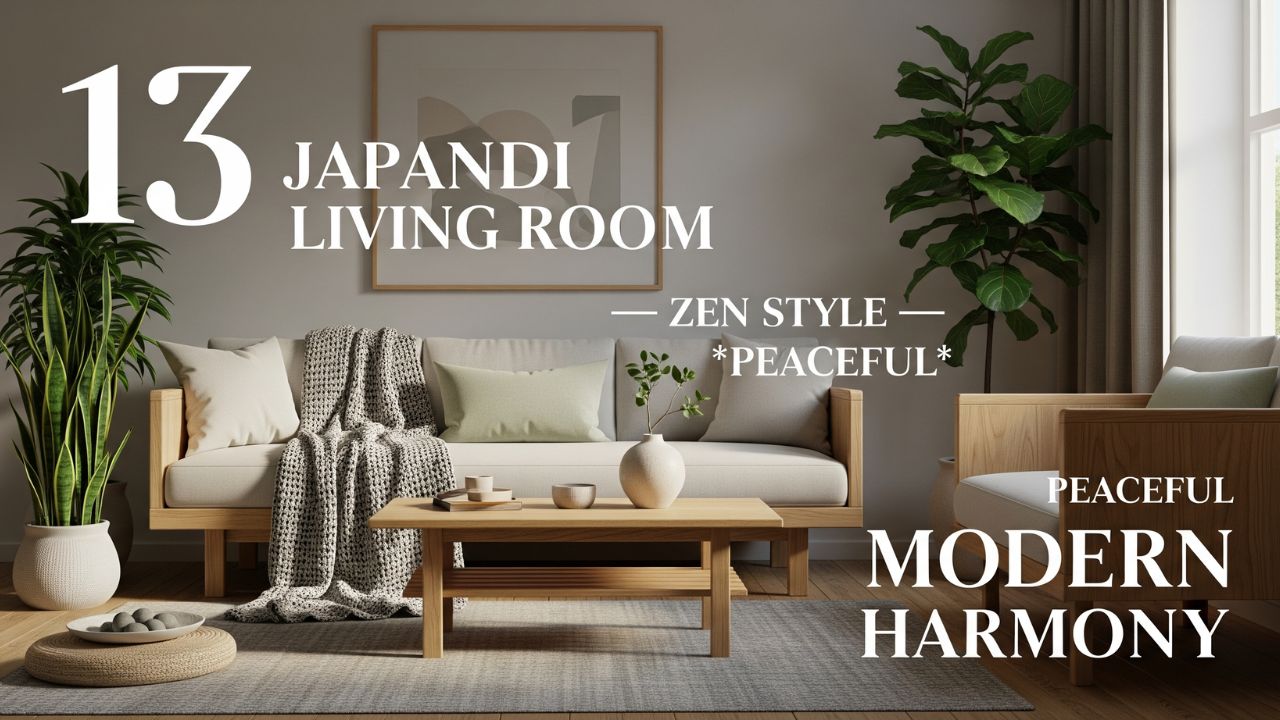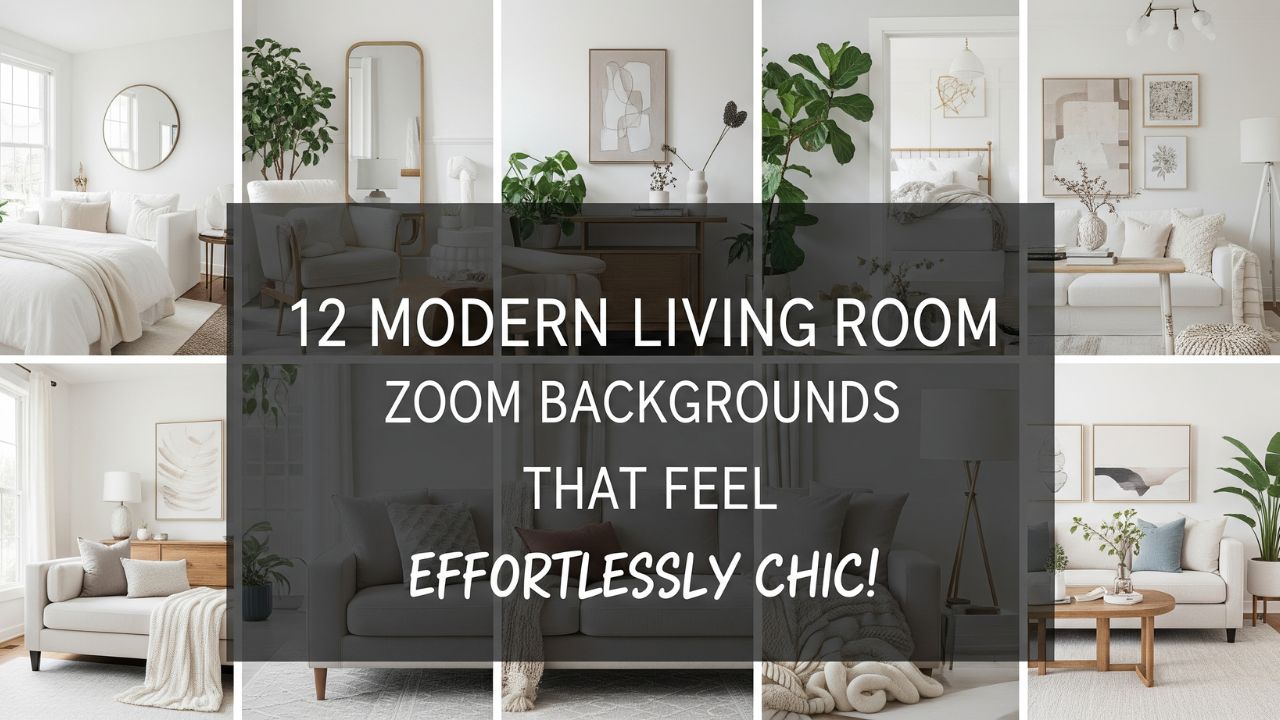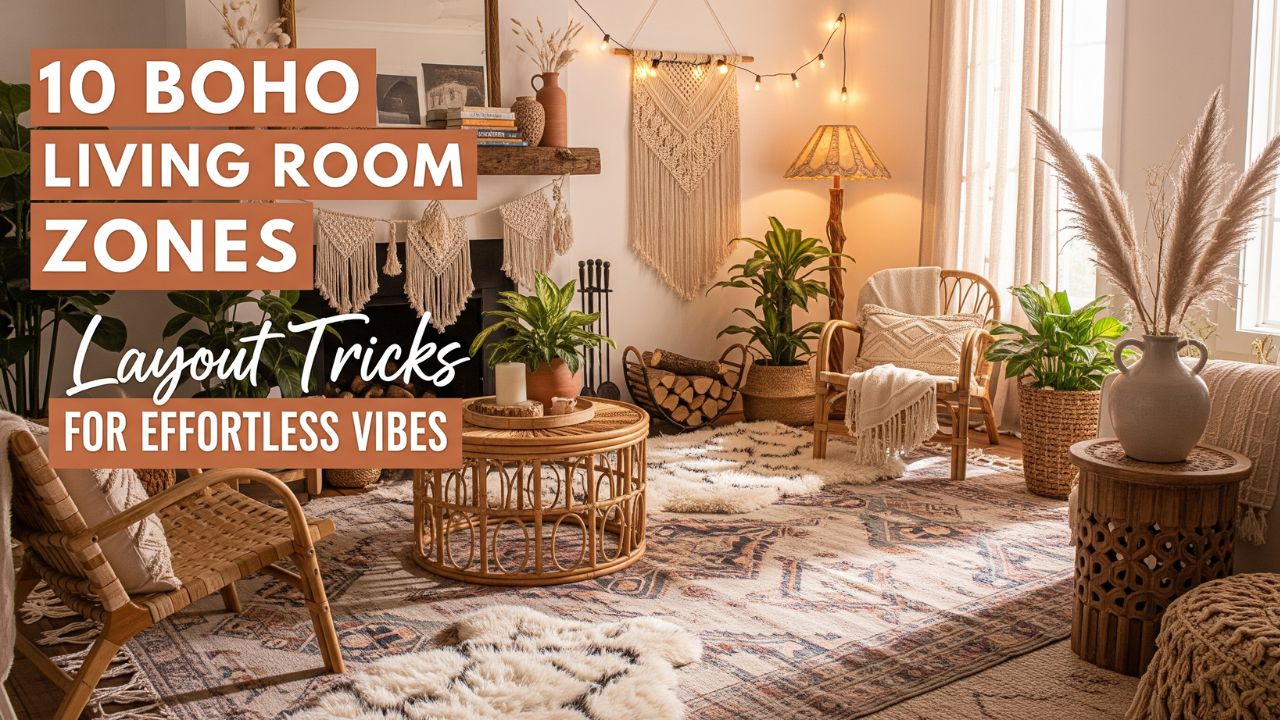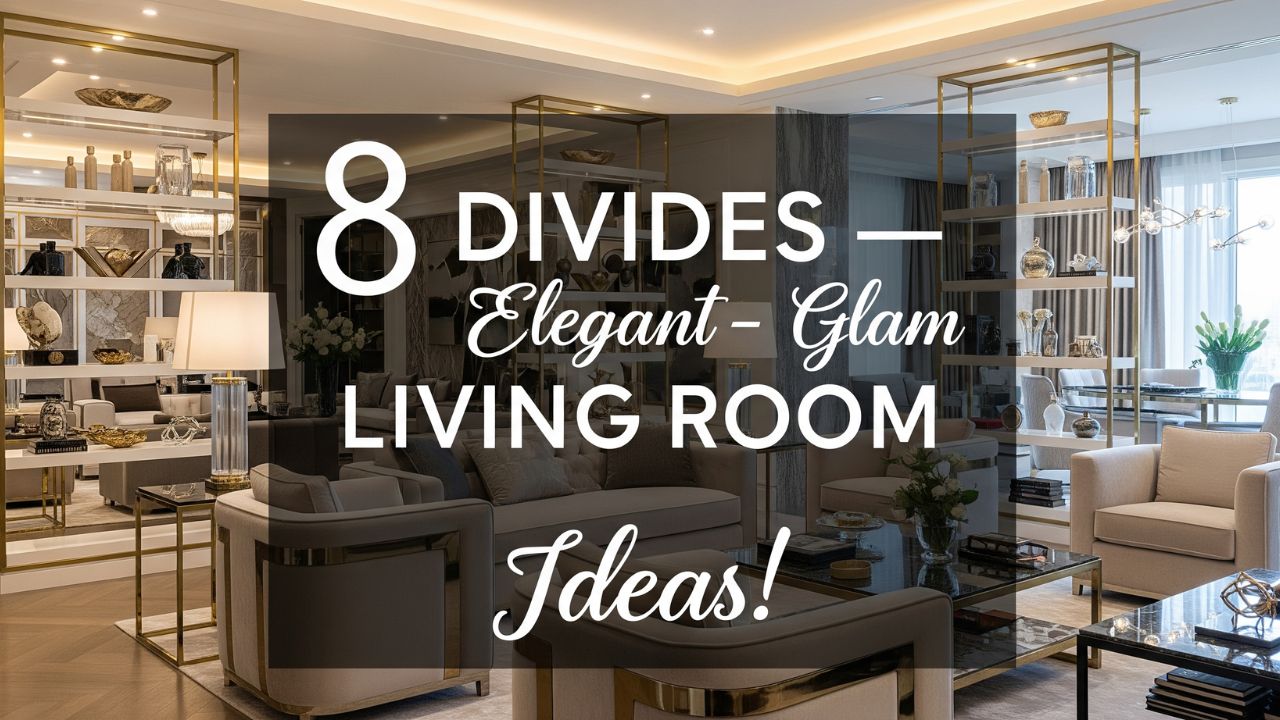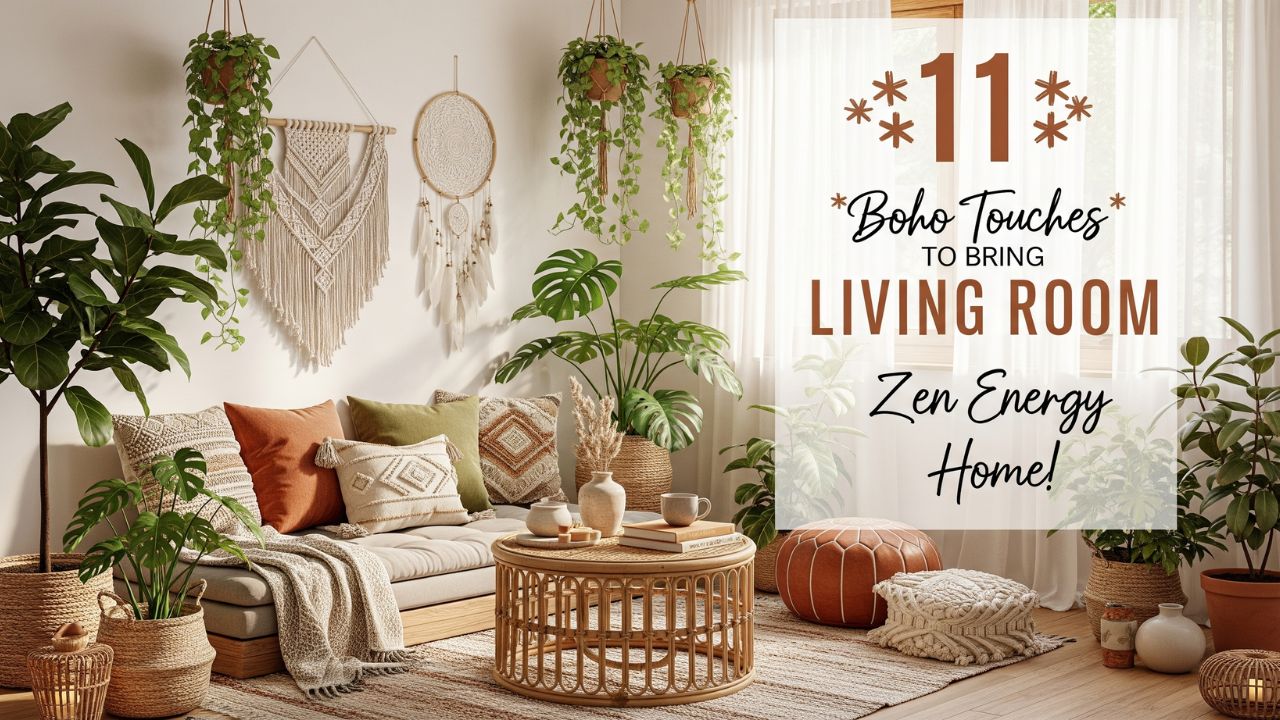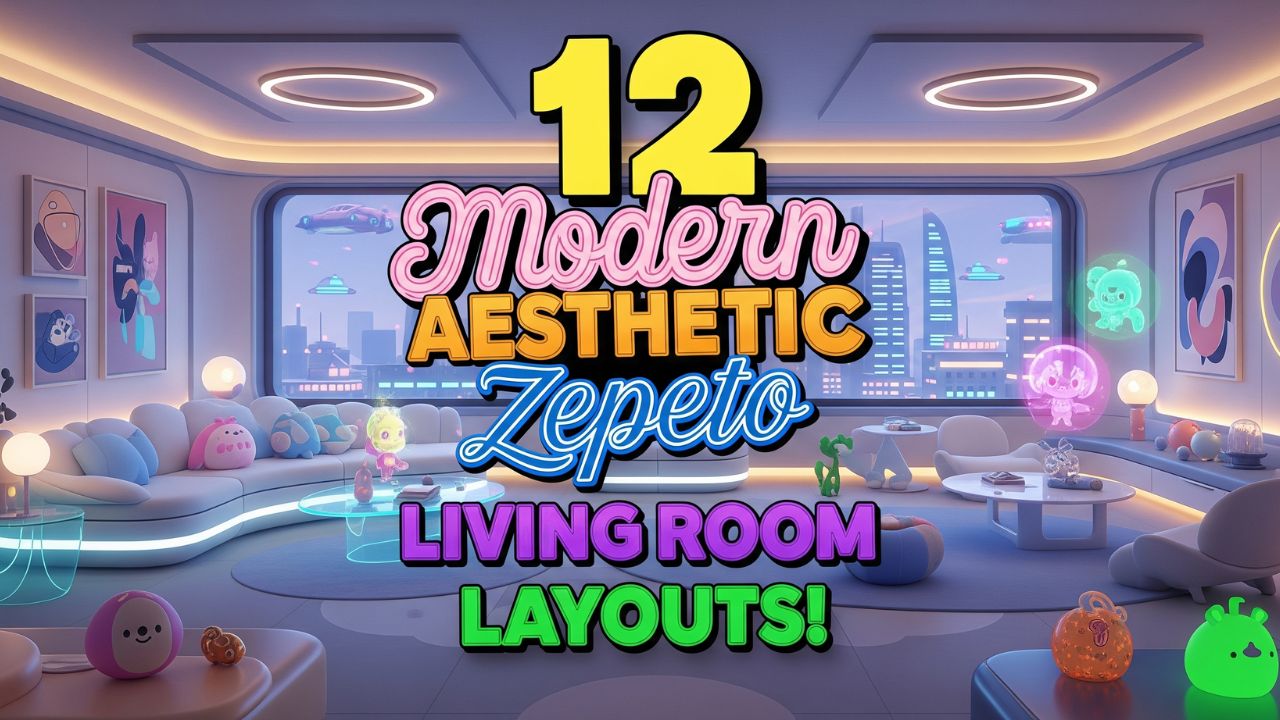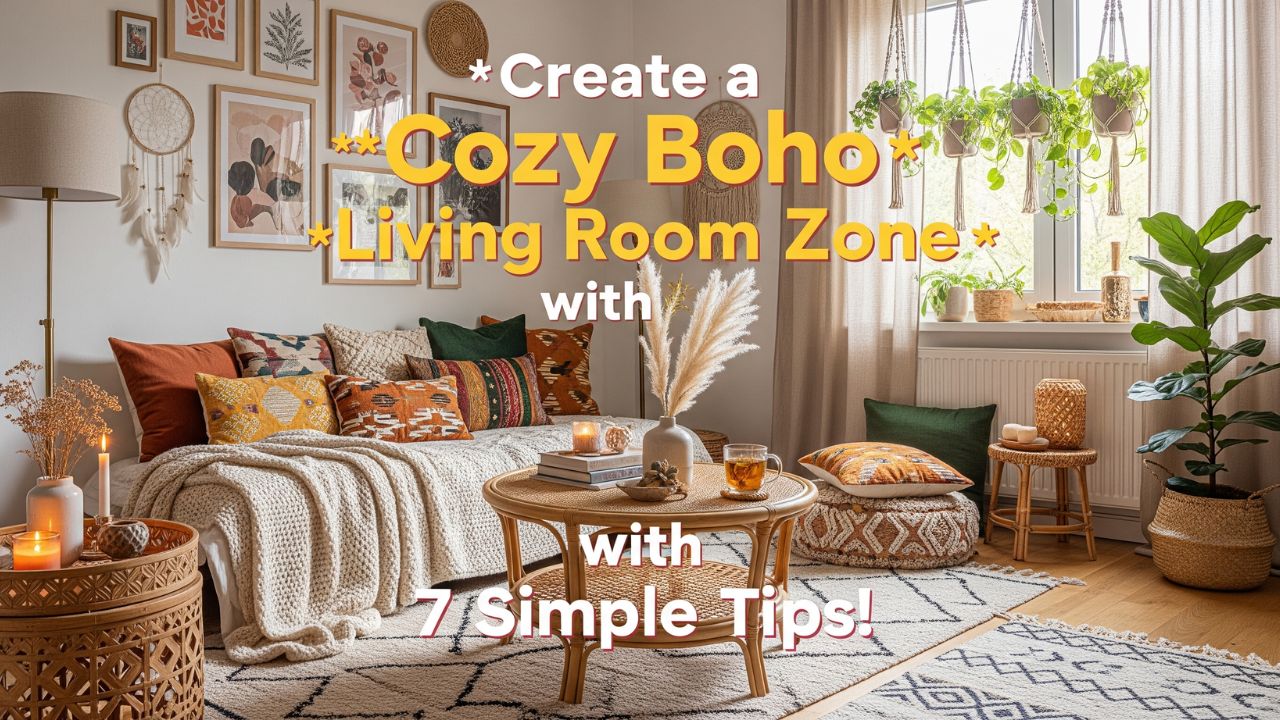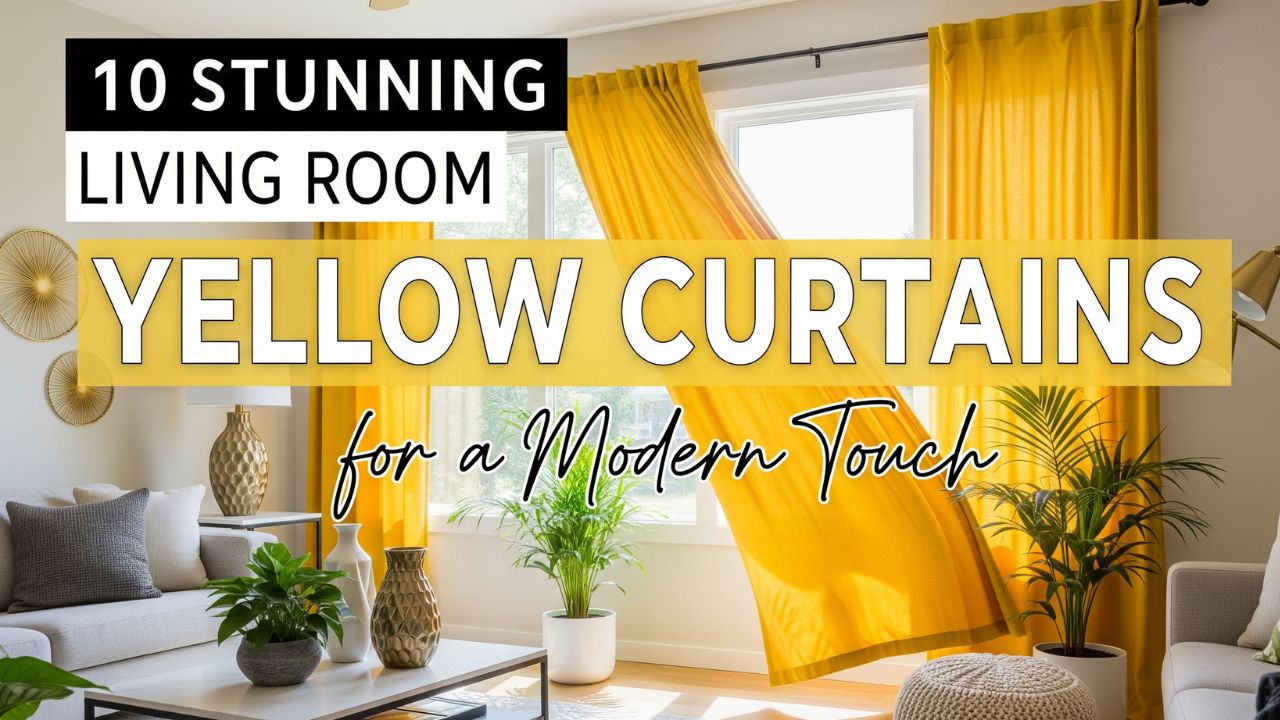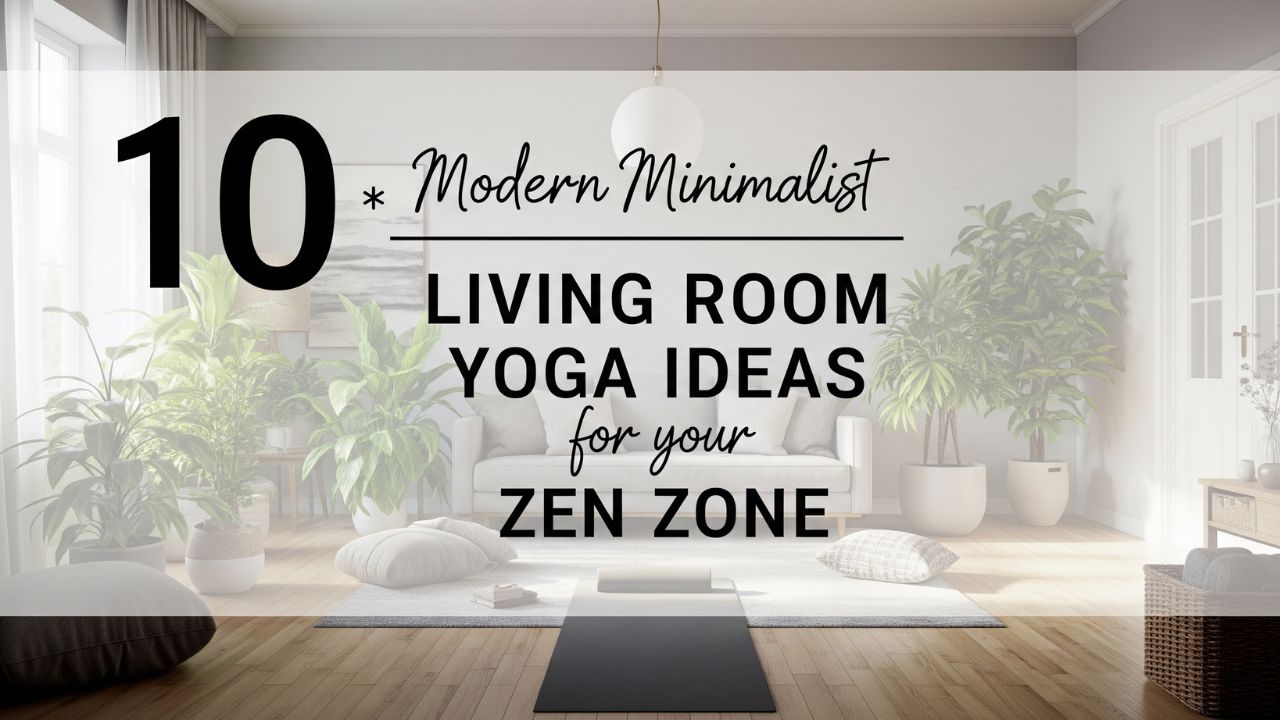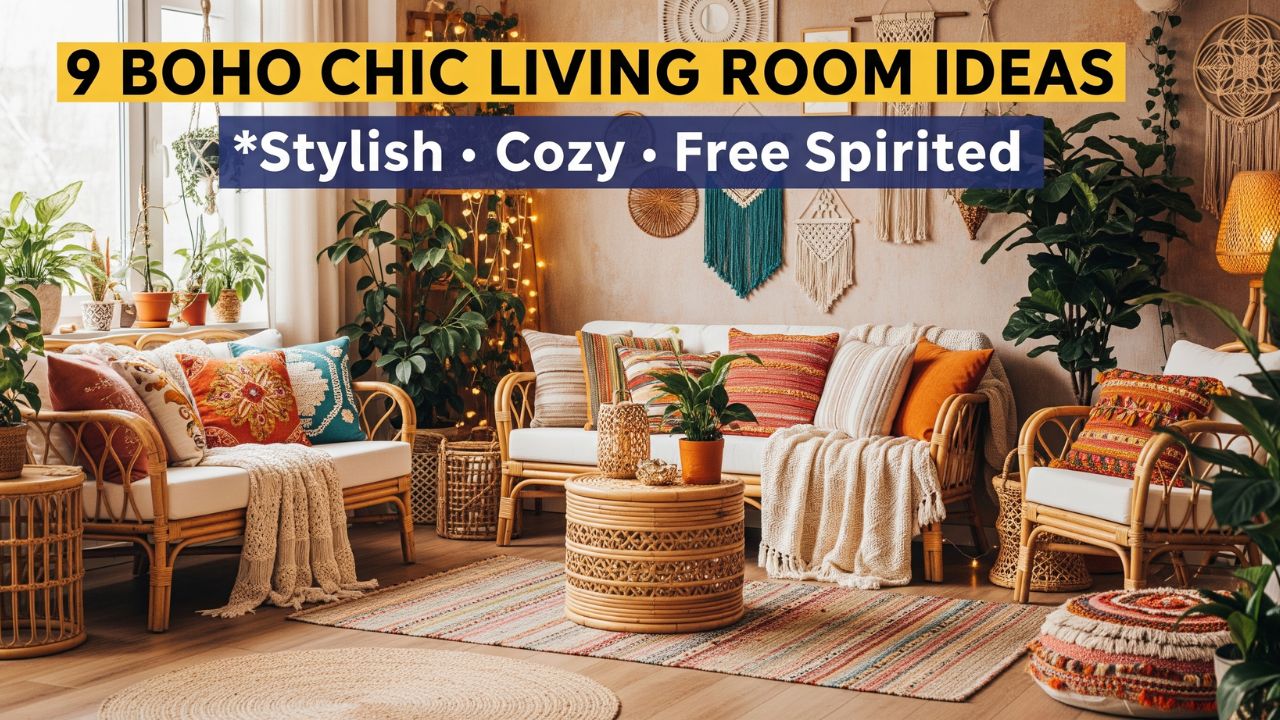Bohemian style—often called “Boho”—has become the go-to aesthetic for those who crave freedom, creativity, and character in their living spaces. It’s that effortless mix of textures, colors, and cultures that gives your room a story of its own. But here’s the uncomfortable truth—what most people call “Boho” today is often just clutter in disguise.
The Bohemian style isn’t about throwing random rugs, plants, and tassels into a room. It’s about balance, intention, and soul. The most beautiful Boho spaces feel layered and lived-in, not chaotic. And yet, even design enthusiasts often make a few critical mistakes that kill the vibe completely.
If you’ve ever looked at your living room and thought, “Something feels off,” you’re probably making one of these seven Bohemian style mistakes. Let’s dissect them one by one so your space feels effortlessly authentic—not artificially overloaded.
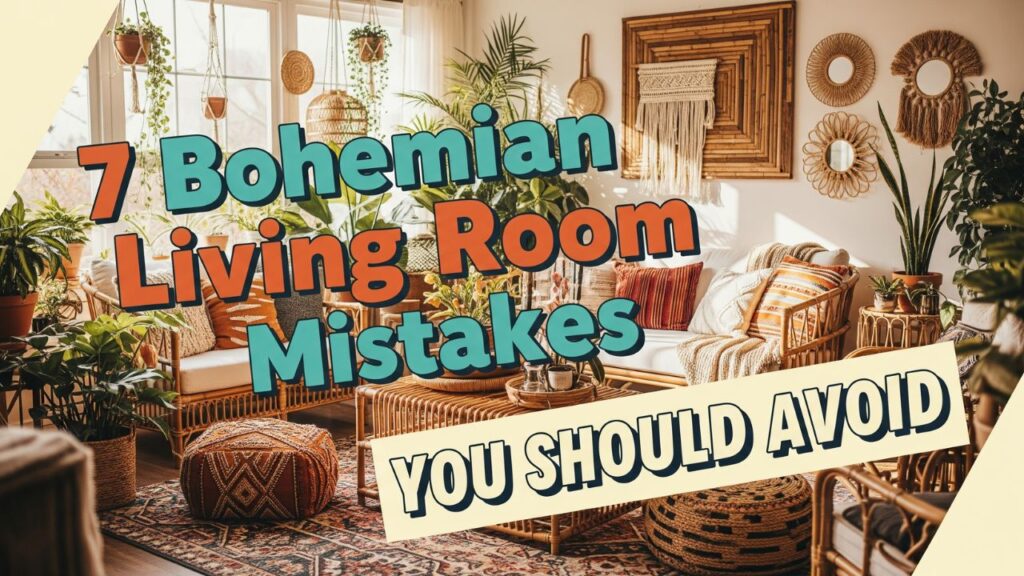
Table of Contents
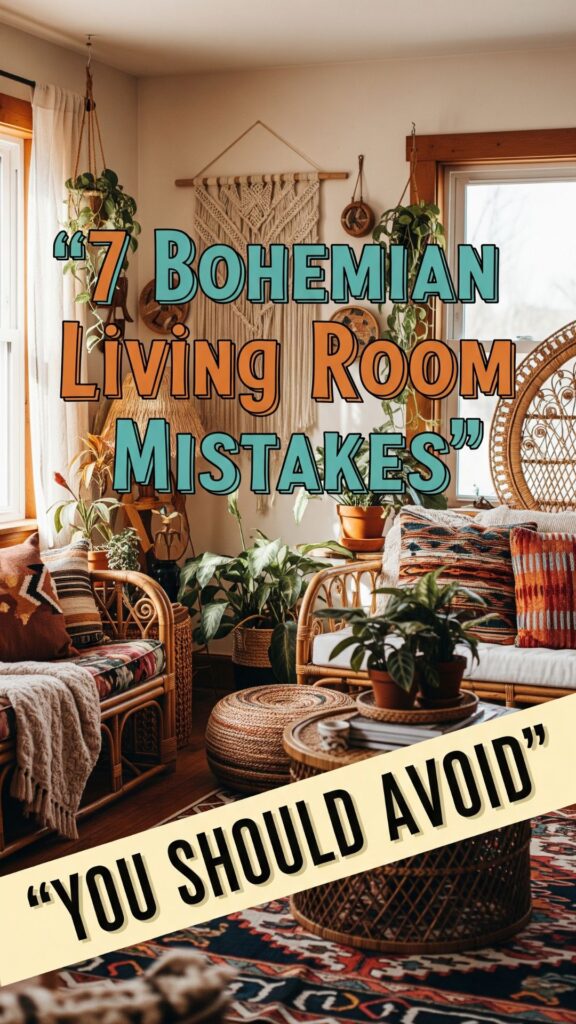
7 Bohemian Living Room Style Mistakes To Avoid
1. Overdoing the Clutter
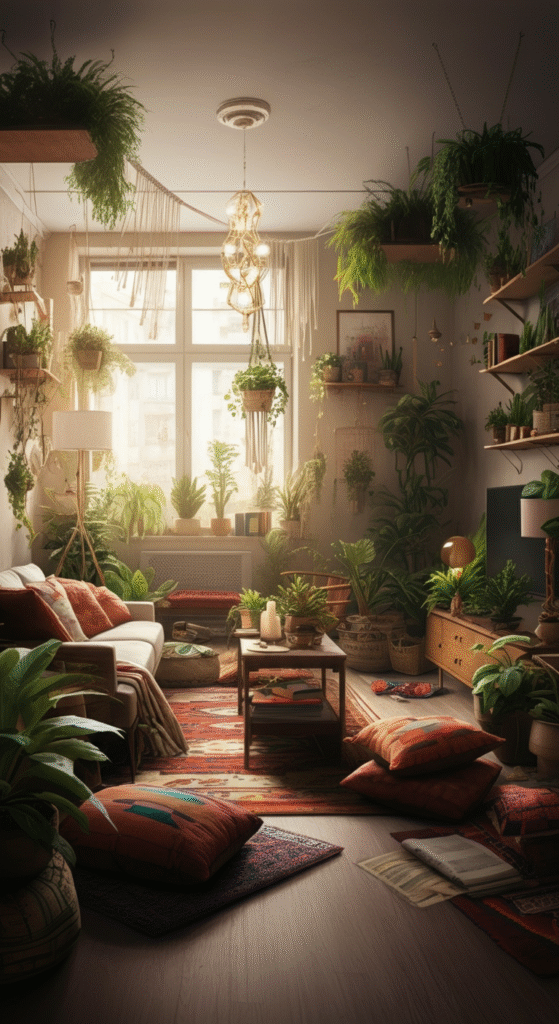
The number one misconception about Bohemian style is that it means “more is more.” While Boho embraces abundance, there’s a fine line between eclectic and chaotic.
A true Bohemian space feels curated, not crowded. It’s layered thoughtfully—with every rug, cushion, and piece of art serving a purpose. When you fill every inch of space, your eye doesn’t know where to rest, and your “Boho dream” turns into sensory overload.
Pro tip: Step back and evaluate each item in your living room. Ask yourself—does this piece add warmth, texture, or meaning? If not, it’s probably noise.
Did you know? The original Bohemians—artists and travelers—decorated their homes with meaningful souvenirs, not just décor. Their interiors told their stories, not Pinterest trends.
2. Ignoring the Power of Balance
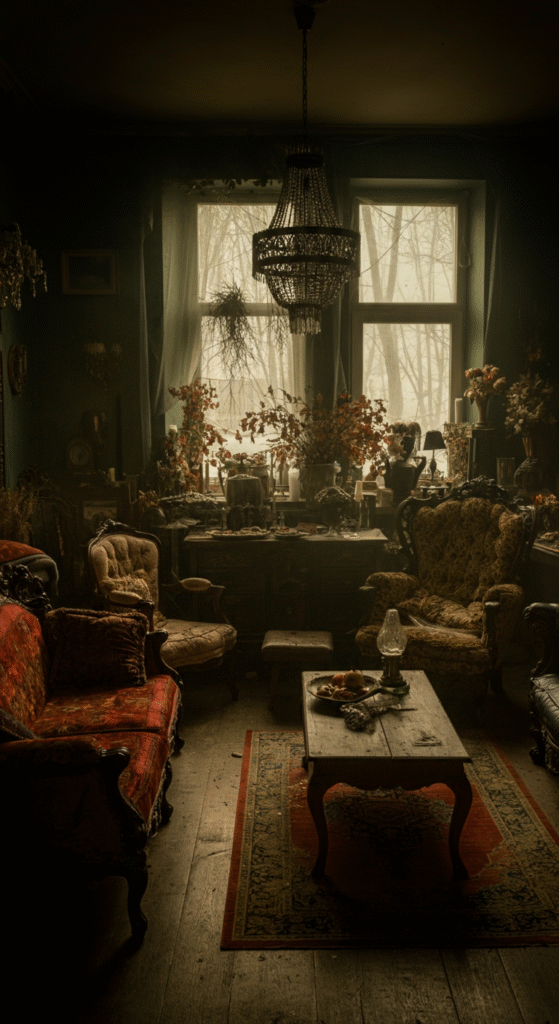
Bohemian interiors thrive on contrast. Think rough meets refined, vintage meets modern, global meets minimal. The magic lies in how these opposites coexist.
When you go all-in on one side—say, only vintage or only modern—you lose that layered character. Too many ornate pieces make your space look heavy; too much minimalism makes it soulless.
Balance texture, tone, and weight. Pair an antique wooden trunk with sleek modern chairs. Combine a neutral wall with colorful textiles. Contrast invites curiosity—and that’s the heartbeat of Boho design.
Myth alert: “Boho” doesn’t mean old or rustic. It’s about storytelling, not age. A new piece can be Bohemian if it carries emotion or craftsmanship.
3. Forgetting Natural Elements
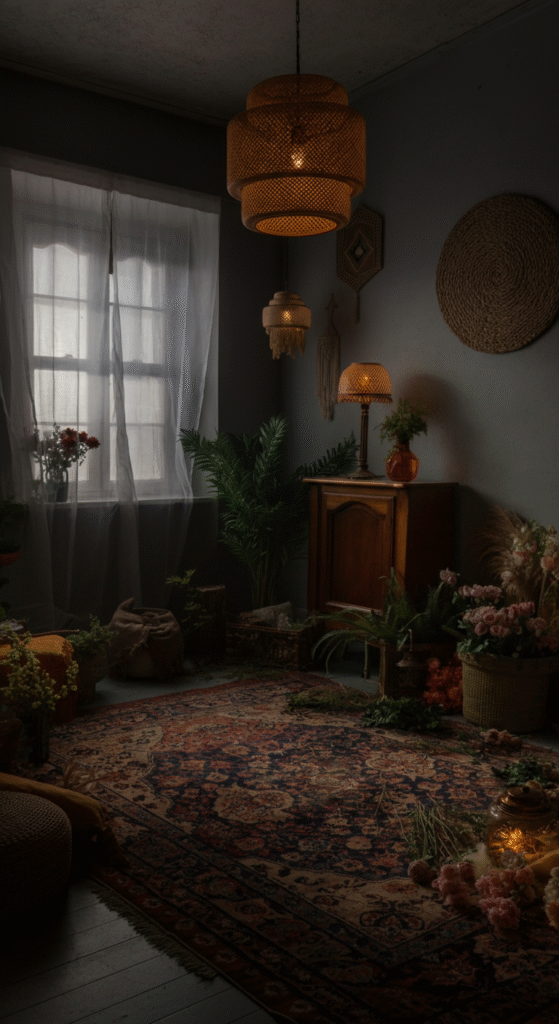
Bohemian style without nature is like coffee without aroma—it’s incomplete. Plants, rattan furniture, jute rugs, and bamboo accents bring the outdoors in, grounding your living room with calm and vitality.
Yet many people focus only on fabrics and colors, completely overlooking natural textures. The result? A room that feels artificial, not soulful.
Fact check: Studies show that even one indoor plant can reduce stress and improve indoor air quality. That’s more than décor—it’s functional well-being.
To fix this, start small. Add a fiddle-leaf fig or a trailing pothos. Swap plastic décor for wooden trays or ceramic planters. Choose earthy materials that age beautifully.
4. Mixing Colors Without Intention
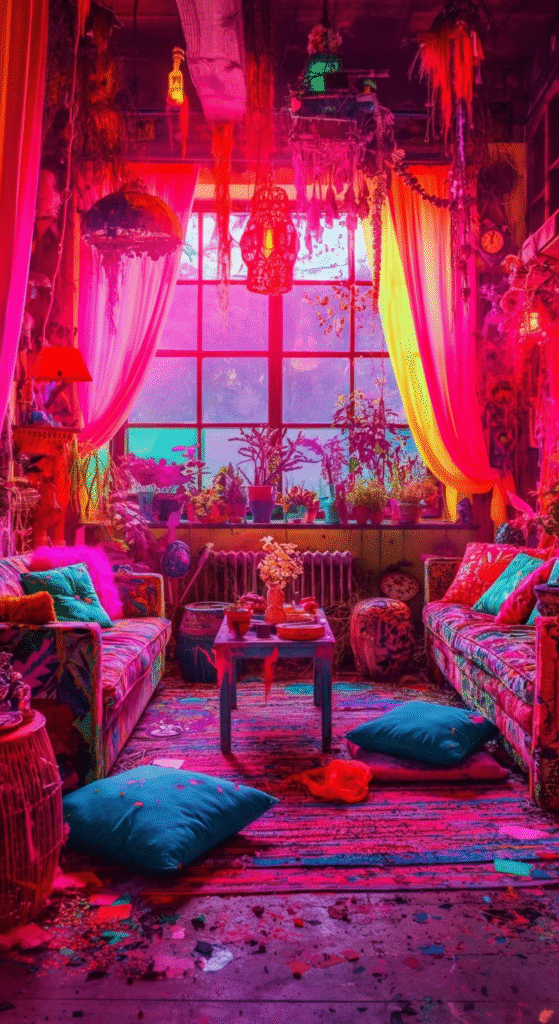
The Bohemian palette is known for its fearless use of color—but fearless doesn’t mean reckless. Random color mixing is one of the most common (and visually exhausting) mistakes people make.
Boho design works best when there’s a base palette—usually warm neutrals like beige, terracotta, or cream—combined with a few bold accents like deep teal, mustard, or burgundy. When every surface screams for attention, the whole space loses harmony.
Try this: Choose one dominant tone, one complementary accent, and one surprise pop color. Let patterns play within those limits. Your space will feel cohesive yet spontaneous.
Do you know? In Moroccan design—the root of much Bohemian inspiration—each color has meaning. Blue symbolizes protection, red symbolizes strength, and green symbolizes peace. Intentional color use isn’t just design—it’s culture.
5. Forgetting the Importance of Lighting
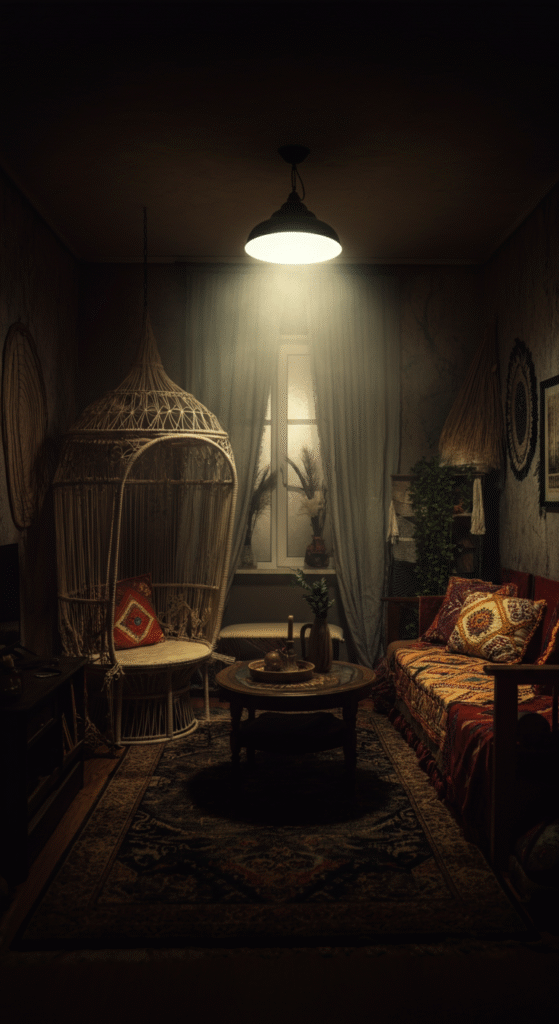
Boho rooms often look lifeless because people rely only on overhead lighting. That kills mood and depth. Layered lighting—ambient, accent, and task—transforms everything.
Fairy lights, floor lamps, lanterns, and candles are essential in Boho décor. They add a soft, golden warmth that makes textures and patterns come alive.
If your space feels “flat,” it’s not your rug or cushion—it’s your light source. Natural light should dominate the day, while soft lamps set the tone at night.
Fact: Warm-toned bulbs (2700K–3000K) mimic candlelight, giving your space that dreamy Boho glow. Skip white LED bulbs—they’re too harsh for this aesthetic.
6. Using Mass-Produced Décor
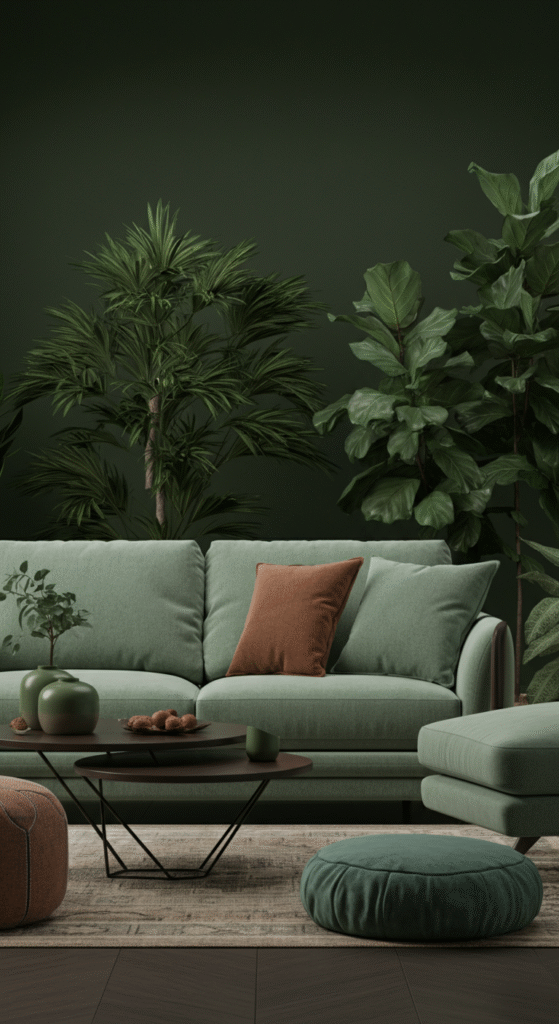
A real Bohemian home reflects individuality. When every item comes from a big-box store, your living room ends up looking like everyone else’s Instagram feed.
Boho is about uniqueness—handmade crafts, local finds, flea market treasures, and travel souvenirs. A woven basket from Jaipur or a hand-painted vase from Marrakech adds more soul than a dozen factory-made cushions.
Myth: Boho style is cheap.
Truth: It’s authentic. You can create a high-end Bohemian look with fewer, more meaningful pieces instead of cluttering your home with fast décor trends.
Tip: Mix high and low—combine artisan finds with modern minimal furniture for contrast.
7. Neglecting the Flow and Function
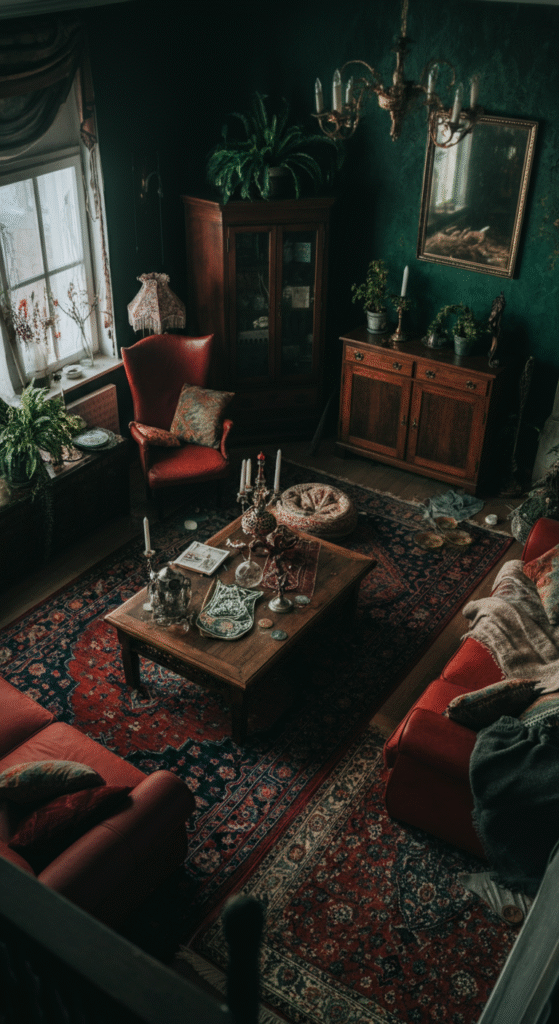
Even the most visually stunning Boho living room fails if it’s uncomfortable to live in. Many people forget that function and flow matter as much as aesthetics.
A good Bohemian space encourages movement and conversation. Avoid blocking natural pathways with oversized furniture or excessive layering. Each piece should feel invited, not forced.
When arranging, think energy—not symmetry. The Bohemian spirit thrives in asymmetry that feels organic. A slightly off-centered coffee table or layered rug pattern creates a more lived-in charm than picture-perfect alignment.
Do you know? In Feng Shui (which shares principles with Boho living), blocked spaces are said to trap energy. A cluttered path can literally “block” good vibes.
Bonus: Forgetting the Story
Every Bohemian living room should tell a personal story. Maybe it’s your travels, your cultural roots, or your creative journey. Without that narrative, your space is just pretty—not personal.
Hang art that means something. Display a book you love. Add a textile from your hometown or a souvenir that reminds you of an adventure. Boho design isn’t a style—it’s self-expression made tangible.
Conclusion
Creating a Bohemian living room isn’t about following a formula—it’s about curating a feeling. It’s about warmth, imperfection, and authenticity. The best Boho homes evolve over time, collecting memories rather than trends.
Avoiding these common mistakes—over-cluttering, ignoring balance, skipping natural materials, misusing color, relying on harsh lighting, buying mass décor, and neglecting flow—will help you craft a space that feels like you.
A true Bohemian living room doesn’t shout; it whispers stories. It doesn’t impress—it invites. And when done right, it’s not just a room. It’s a reflection of your life, layered in comfort, history, and soul.
Frequently Asked Questions (FAQs)
How do I start decorating a Bohemian living room from scratch?
Start with a neutral base—like white or cream walls—and slowly layer textiles, plants, and meaningful décor. Let it evolve naturally over time.
Can a Boho room be minimalist?
Yes, that’s called modern Boho. It balances clean lines with organic textures, focusing on quality over quantity.
What colors define Bohemian style?
Warm earth tones like terracotta, ochre, mustard, teal, and cream dominate, often mixed with natural wood and greenery.
Is Bohemian style expensive to create?
Not necessarily. The best Boho décor often comes from thrift stores, flea markets, or handmade items—not luxury brands.
What’s the biggest mistake to avoid in Boho design?
Forgetting your personal story. A Bohemian room without personality is just decoration, not design.
